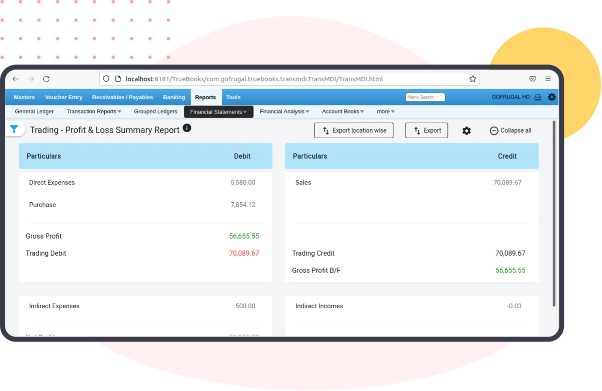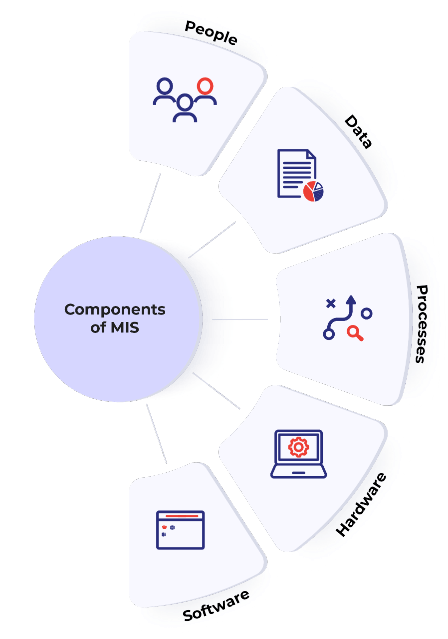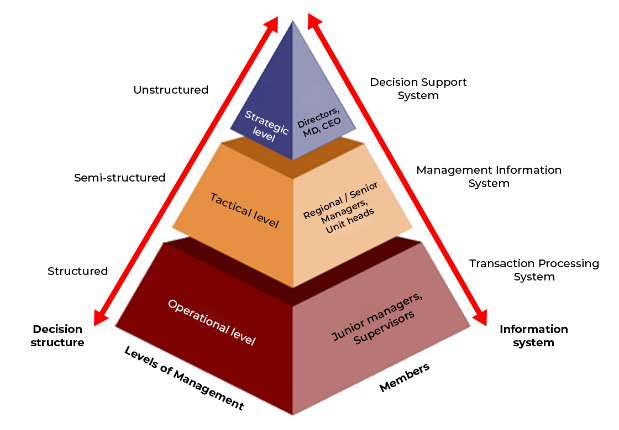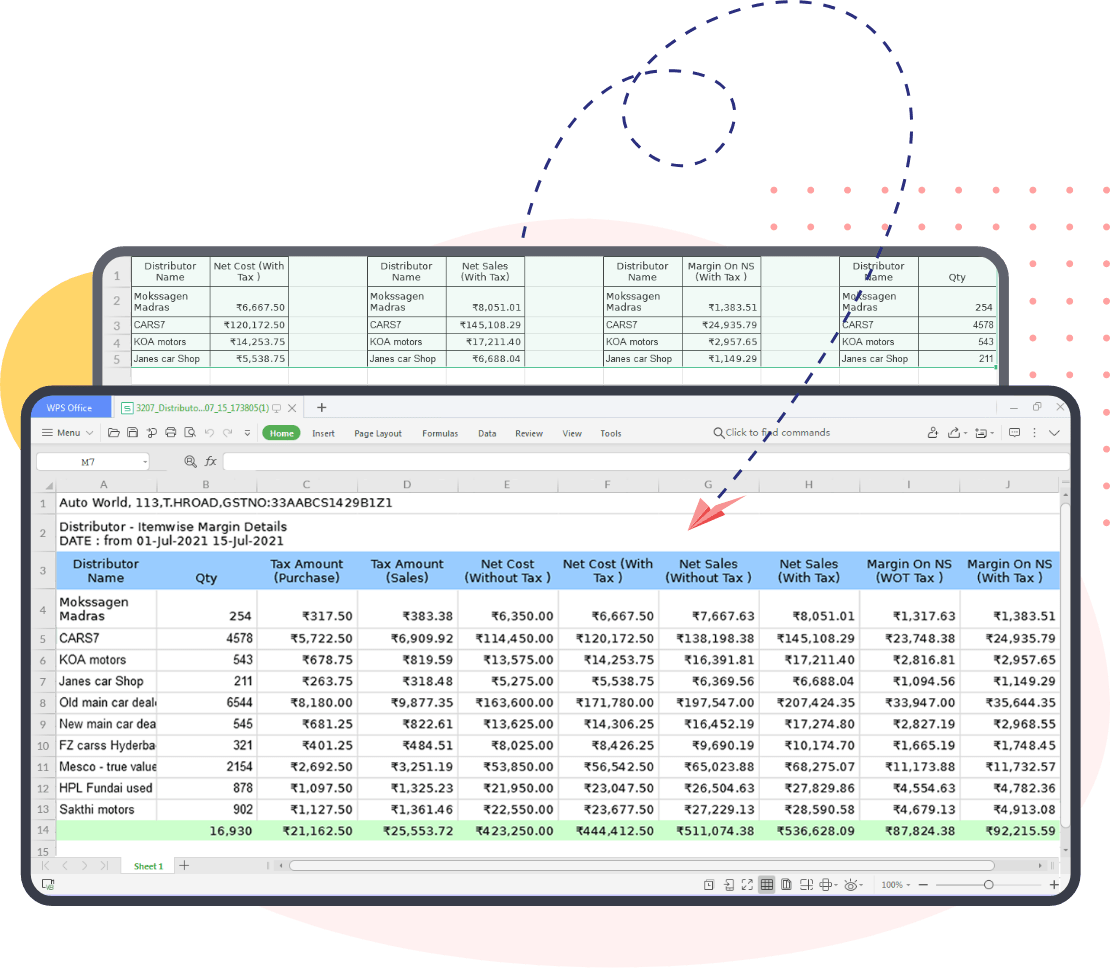
Generating MIS reports with 1 click has reduced our efforts, time, and resources. We were able to track every report right from received goods to financial statements anytime from anywhere. This helped us to make the right decisions at the right time and track our employee activities without any additional effort.
Our supermarket with 750+ type of items in the shelf has made sales of Rs. 30 Lakhs for the month
is raw data. 75% of sales in the supermarket are from the grocery and health care sections
is an insight. Based on this, a manager can make a profitable decision: Let’s allocate an extra 25% budget for the purchase of these fast-selling products. Not just for purchase, MIS reporting system can be implemented for all departments.
If data is pooled, we can see a pattern emerge. For instance, a spike in sales of sunscreen lotion from the health care section in the last week of April
can mean a lot. It helps you make a range of decisions. From what to purchase next month to which brand to focus and from planning for petty expenses to exploring big-ticket investments. You can predict your cash flow and ensure control over your bottom line (profits) with the help of an effective MIS reporting system.
MIS reporting ensures timely decision-making. Each level of management demands a different set of insights. Day to day sales till employee attrition rate has to be communicated to different levels of management. There is another set of influencers namely, distributors and customers, who demand data periodically. The outstanding credit amount to be collected from customers has to be constantly notified to them, once the credit period is exceeded.
Our supermarket with 750+ type of items in the shelf has made sales of Rs. 30 Lakhs for the month
is raw data. 75% of sales in the supermarket are from the grocery and health care sections
is an insight. Based on this, a manager can make a profitable decision: Let’s allocate an extra 25% budget for the purchase of these fast-selling products. Not just for purchase, MIS reporting system can be implemented for all departments.
If data is pooled, we can see a pattern emerge.
For instance, a spike in sales of sunscreen lotion from the health care section in the last week of April
can mean a lot. It helps you make a range of decisions. From what to purchase next month to which brand to focus and from planning for petty expenses to exploring big-ticket investments. You can predict your cash flow and ensure control over your bottom line (profits) with the help of an effective MIS reporting system.
MIS reporting ensures timely decision-making. Each level of management demands a different set of insights. Day to day sales till employee attrition rate has to be communicated to different levels of management. There is another set of influencers namely, distributors and customers, who demand data periodically. The outstanding credit amount to be collected from customers has to be constantly notified to them, once the credit period is exceeded.
mrakaf comes with a variety of MIS reports catering to the needs of all stakeholders. Some examples of such MIS reports are as follows:
Customer-wise / Product-wise Sales reports with/without Gross Margin
Quadrant reports based on Item wise High-Low Profitability-Popularity combo
Financial Reports like Balance Sheet, Profit & Loss, Cash Flow, Fund flow statements
Expired stock / Non-Moving / Slow-Moving stock reports
Sales rep wise order in-take, sales, and collection reports
Exception reports like Negative balance/outstanding
Inventory / Debtors / Suppliers Ageing reports
Accounting Ratio reports
Audit Trail reports

Of all the things explained, here are three summarized reasons why mrakaf MIS is the best of the lot
Almost all type of MIS reports can be readily exported and widely shared
MIS reports can be accessed from anywhere at any time, from browser to mobiles
Certain MIS reports have to be sent to management daily or on specific days. mrakaf will do it for you as you require, with one-time scheduling process. Just the email ids, date and time need to be fed
MIS report is an overall performance report of an organization that contains information from multiple departments. MIS reports consist of several types of reports to analyse the company's performance and plan the next set of actions. Management information system report helps businesses in assessing the business wealth, financial status and current position in various aspects, which helps in planning the next actions towards growth of the business.
MIS Reports full form is "Management Information System (MIS)" reports. It is a powerful system to assist decision-makers to take smart decisions. A part of this well-organized system is MIS reports, the assistant behind the decisions. The reports encompass data from all the divisions of a company, from sales to HR, to provide insights. These reports are prepared for a specific period and for a specific decision-maker. A store’s weekly sales report is for the concerned store manager while the monthly sales report of all stores is for the owner.
MIS reporting gives an overall picture of all the happenings in a company viz orders, revenue generated, queries raised by customers, the performance of employees, etc. These reports will determine the performance by comparing the target achieved with the target planned for a particular period. After analyzing what's working and what's pulling them down, businesses can adopt the best practices that would give better results. This is the fundamental purpose of MIS reports.
There are five significant components of an effective Management Information System (MIS). Let us understand what role they play in the MIS reporting system.
People
Various stakeholders who are the users of the MIS system
Data
Volumes of data that is to be fed into the MIS system
Processes
Sequences of steps involved in collecting, storing, and analyzing data processed by the MIS system
Hardware
All hardware forms of computers (servers/workstations), printers, networking equipment, etc that aid in the processing of data into information
Software
Integrated set of computer system/application programs like Operating systems, Database Management systems (DBMS), Billing/POS software, Accounting software, ERP/CRM software, etc which run on the hardware systems for the data conversion process


The above pyramid depicts the three levels of Management, their composition, Information Systems and the type of decisions to be taken at each level. The type of MIS at each level depends on various factors like stakeholders who use the system, frequency of communication intra-level / inter-level, turn-around time to respond to scenarios, level of technology dependency etc
Every MIS report has its own purpose. According to factors like source data, expected outcome, target audience MIS reports can be categorized into the following types :
As a summary of the company performance, across various divisions, it makes top management understand the performance of their investment
Inflow and outflow of cash report will be reviewed daily or weekly by the middle level management. Factors such as sales, credit receivables from customers contribute to inflow and purchases, credit payments to customers contribute to outflow. The cash flow statement MIS report brings out every penny that’s moved around through the company
As the sole purpose of determining performance, this report gives profit earned after taxes against the target planned for a period. Quarterly profit MIS reports can be analysed to identify the company’s growth over last year. Major decisions in budget will be taken thanks to these profit MIS reports
Accounting comprises of four components namely, assets, expenditure, liabilities and income. The performance of these components determines the financial position of the company. Usually, it’s prepared by accountants
Segment wise, item wise, category wise performance of the past and present constitute trend MIS report. Investments can be planned accordingly
One figure that’s the subject of many a meeting is revenue. Sales MIS report showcases precisely that. It also goes much deeper and shows the region that's contributing the most, the products that are performing and other growth factors. Thus, helping the company know what to cut, where to add and which one to focus on
Analysing what's working is equally important as analysing what's not. For example, something that's pulling us down will definitely incur an expense. To understand the growing expense compared to previous quarter/ month data, the exception reports would be exceptionally useful
To give a heads-up to the purchase manager, daily inventory MIS reports will be sent. Depending upon the fast-moving items, current stock count and distributor balances in the inventory MIS report, the purchase manager will get to decide on the upcoming purchase orders
The three levels of management expect MIS reports from four different departments to assess the company's performance and make smart moves
This method of MIS Reporting demands excellence in MS Excel or other spreadsheet tools.
Step 1 : Raw data from multiple departments have to collected in order to structure the report and to decide the heading for rows and columns
Step 2 : Segregate the raw data and put them under respective headings. Apply filters to remove unnecessary information that won’t contribute to decision-making
Step 3 : Goal is to prepare a dashboard template. It can be created with Excel formulas and pivot tables. However, the segregated data needn’t be floating around the dashboard template. Create a new sheet in the report and move the segregated data to the depository sheet. Formulas can help you showcase the final results in the dashboard template
Note : Ensure headings are in the required format. E.g., the revenue column should have a currency format. Also, re-check the formulas applied at least thrice to avoid errors.

Unlike the tons of manual effort and re-checking issues involved with Excel, almost all types of MIS reports can be readily exported from mrakaf software. This method of MIS Reporting involves just 3 simple steps:
Step 1 : Identify the report name which contains your required information either from the Report menu or from the Menu search bar, say for example, "Bill wise Item wise sales detail report"
Step 2 : Enter the mandatory main filters like Bill date range, location name with/without optional advanced filters like the Product category, sub-category, Brand name, etc and Click on Apply button
Step 3 : Once the report data is loaded on screen, click on the "Export Reports" button, select the export type like xls or csv or pdf and finally click on the export button to get the report in the desired format.
Note : These reports have direct insights and can be exported from anywhere anytime. However, to generate a MIS report by an amalgamation of two or more exported reports can be done in an excel sheet only. Combining two insightful reports would require less than 10% of the manual effort put in the first process.
We are sure you will be convinced about MIS and, importantly, mrakaf's MIS automation. To make it easier for you, click on the link below and you get a FREE trial of mrakaf ERP and other apps for a full month. Now this is one insight you surely don’t want to miss!